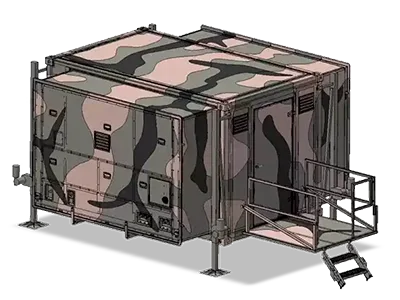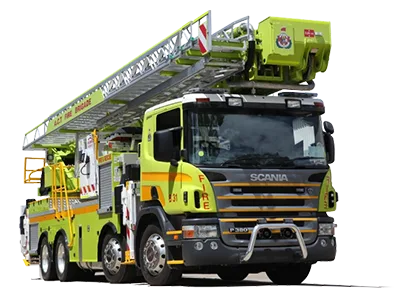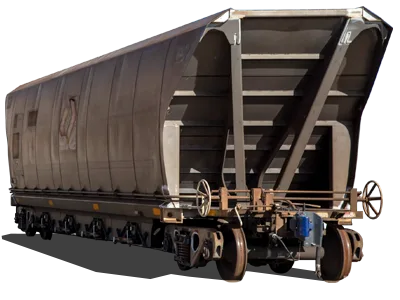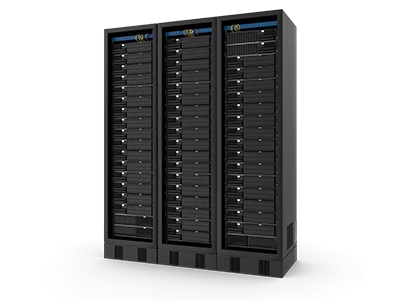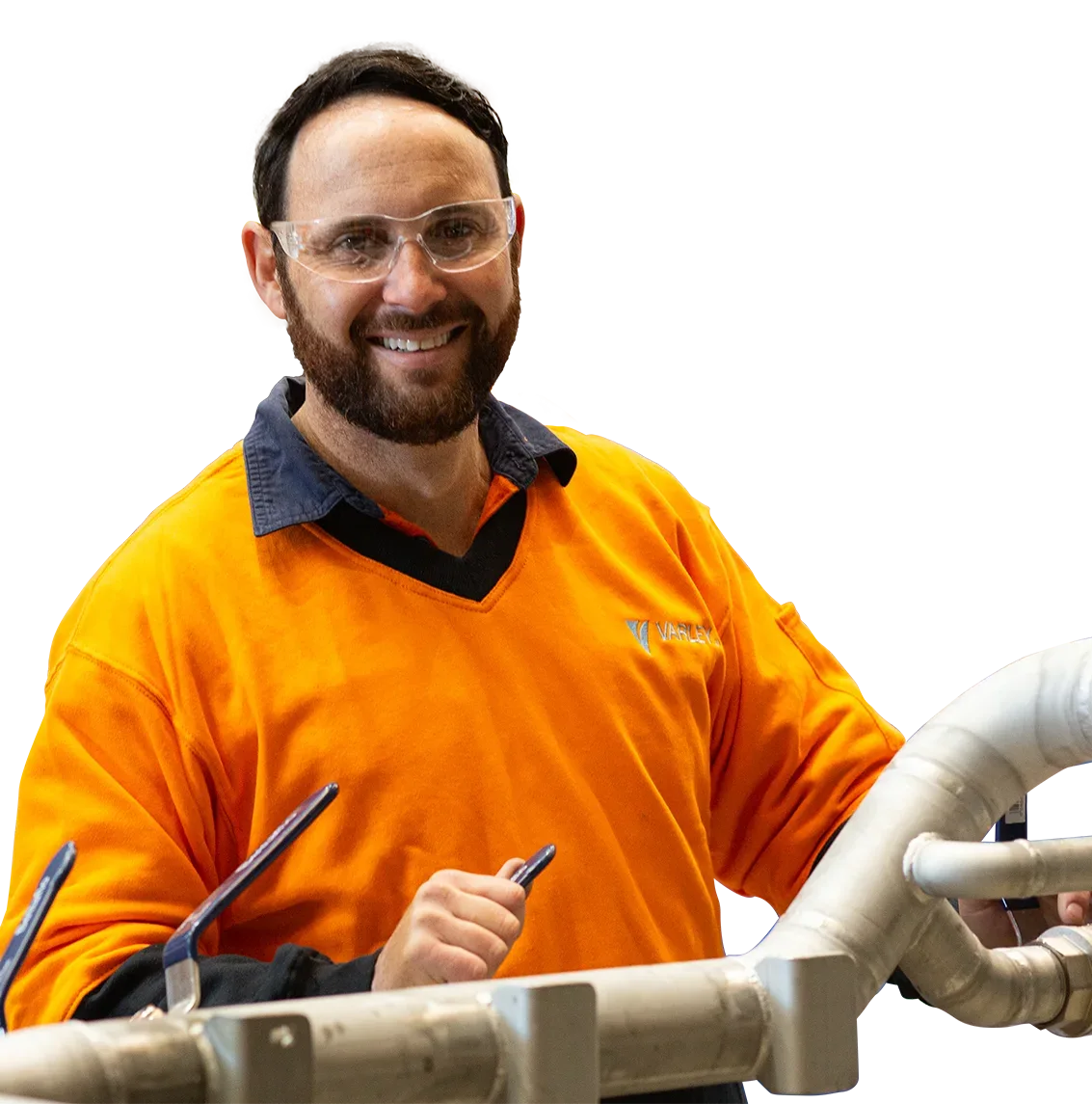Rail Network Certifications
Rail Network Certifications ensure compliance with industry standards and regulations for safe and efficient railway operations.
Varley Rail Network Certifications
Varley Road Rail offers a range of certification options for owners and third-party rolling stock operators and contractors requiring rail access to any various rail networks throughout Australia.
Our road rail experts are available to guide you through the correct processes in getting your hi rail vehicles, road rail equipment, and tack machines certified.
Varley has an on-site certifying facility located in Carrington NSW or we can travel to you.
Certifications or TOC Manual Approvals for:
- Transport NSW
- ARTC – CRN John Holland
- M Metro and V/Line
- South Australia Transport and Infrastructure
Under the Rail Safety National Law 2012, Railway networks around Australia have to fulfill a number of new obligations around its overall management of road/rail vehicles. Road/rail vehicles which are not operated by an accredited Rail Transport Operator (RTO) will now have to operate under their desired Rail Networks Accreditation, and as such, there will be a responsibility to ensure that all vehicles are maintained in a safe condition for operation on the rail infrastructure. All third party rolling stock operators and contractors wishing to operate road/rail vehicles on the rail infrastructure must manage the certification and recertification of their vehicles in order to be placed on their desired rail networks register.
Transport NSW
Road rail vehicle recertification road rail vehicles, trolleys, and trailers are required to undertake annual recertification to continue acceptance and operation on the RailCorp Network. The annual recertification is covered by ESR 0002 Road/Rail Vehicle Certification and Recertification and ESR 0003 Trolley Trailer & Quadricycle Certification and Recertification. The recertification is carried out by a approved compliance companies (refer to ESR 0002 for details on approved compliance companies) to verify that the vehicle still meets the requirements of T HR RS 00000 ST. Vehicles that do not meet the requirements will not be recertified and are not permitted to operate on the RailCorp network until corrective action is carried out. Vehicles that meet the requirements are issued with a Rail Industry Vehicle Certification label, which amongst other details, shows the effective compliance date.
Refer to Figure 1 for an example label. Figure 2 shows an example road rail vehicle with a recertification label.
TS 13000 Road rail vehicle and small plant recertification database contain a list of vehicles issued with rail industry vehicle certification and their compliance date. Any incidents that occur involving the vehicle, including derailment, collision, or heavy impact to the rail guidance system, will require the vehicle to be automatically decertified. This vehicle will remain decertified until recertification is performed by an approved compliance testing company.
ARTC
To prescribe the rules for operating track vehicles in the Australian Rail Track Corporation (ARTC) NSW Network.
Track vehicle types must be approved as fit for purpose in accordance with the requirements specified in the ARTC Train Operating Conditions (TOC) Manual. Approved track vehicle types are published in the ARTC Train Operating Conditions (TOC) manual. If compatible track vehicles are fitted with approved coupling devices, they must be coupled together during travel.
To occupy a running line track vehicles may occupy a running line only with the authority of the Network Control Officer responsible for the location.
Occupation of Running Lines Conditions
- Within yard limits, or
- Within intermediate sidings, or
- Within the limits of a work on track authority, or
- Where the approach of rail traffic can be managed by controlled signals.
- The Qualified Worker in charge of a movement must tell the Network Control Officer when the rearmost vehicle has:
- Entered or cleared a section, or
- Cleared the running line, or
- Cleared a location nominated by the Network Control Officer
M Metro
When presenting road rail vehicles to Approved Compliance Testing Companies, it is important that the following requirements are observed:
- Vehicles should be presented such that the rail equipment and running gear is in a clean state
- Vehicles must be presented in the “empty” condition, carrying only the essential items which always remain with the vehicle, and not carrying any payload
- Fuel tanks must be no more than ¼ full
- Equipment such as cranes must be secured in the stowed position
The following documentation is required when presenting vehicles for assessment:
- Engineering certification for any structural work, including insulation of rail guidance equipment. (Where such certification is not available, and no structural problems are evident with the vehicle, up to 12 months grace (from September 2013 and ending 30 September 2014) will be given to obtain engineering certificates)
- For vehicles fitted with Elevated Work Platforms documentation demonstrating that a stability test has been conducted
- For Elevated Work Platforms that have been electrically tested, the insulation resistance test report
The Approved Compliance Testing Company is to complete and sign the Road Rail Vehicle (TV2) Acceptance Checklist, L4-TRK-FOR-059.
UGL Regional Linx
All road-rail vehicles and rail trolley/trailers must comply with the requirements specified in CRN Standards CRN RS 006 and CRN RS 007, respectively, in order to gain acceptance and be certified to operate on the CRN or CRN worksites. Each application for initial vehicle acceptance shall be accompanied by a relevant Certification Request Form as specified above. The Request Form provides data relevant to the vehicle for the CRN Manager to assess the vehicle’s suitability for operation on CRN.
For any road vehicle, plant, trailer, or trolley that has been manufactured or modified to also operate on the rail, the owner and/or operator of the vehicle shall obtain an engineer’s certification, validating the design, construction, and/or installation of the rail guidance equipment and associated modifications, and shall provide evidence of a documented maintenance and inspection regime for the vehicle, in order to gain approval to operate on the CRN. Vehicle certification with the CRN Manager will be dependent on the vehicle having appropriate and auditable maintenance and inspection records. Such vehicles shall have their rail operating suitability status re-certified annually in accordance with section 4.7 of this standard. The worksite supervisor/track manager is responsible for ensuring that a road-rail vehicle, trolleys, and trailers are certified for operation on the CRN and each vehicle pre-work inspection checklist is sighted and endorsed by the worksite supervisor/track manager before such vehicles are placed on the rail. Such documents shall be retained and filed by the owner/operator for audit purposes.
FAQs
What changes are being made to Australia’s management of rolling stock?
To comply with the Rail Safety National Law 2012, the rail network is placing an increased emphasis on workplace rail operating safety. The following changes are being introduced:
All road/rail vehicles proposed for operation on rail infrastructure must be approved and listed on a rolling stock register. Unregistered vehicles will not be permitted to operate. A re-certification of all road-rail vehicles and some small plant, such as trolleys and trailers, will come into force from 1 March 2010. Re-certification will require each vehicle to undergo the necessary tests/inspection to ensure continued compliance with the Minimum Operating Standards for Rolling Stock Requirements. A daily pre-work inspection regime will come into force from 1 January 2010, for all road-rail vehicles and some small plant such as trolleys and trailers. This will require each vehicle owner/operator to conduct a documented inspection of a vehicle each day before it will be permitted to commence work. Each vehicle/plant owner/operator will be required to have a documented vehicle maintenance regime in place covering scheduled maintenance and inspection. Such records shall be maintained and be available for audit purposes.
What do you need to do if you wish to perform work on a track for your desired Rail Network?
Commencing from 1 March 2010, operators and contractors of road/rail vehicles need to:
a) Identify all your vehicles that require accreditation with its rail network that is applicable.
b) Ensure that each identified vehicle has been tested/inspected for compliance with Engineering Standards.
c) Apply for registration of each vehicle.
d) Vehicles new to the network will require a completed A6 Road/Rail Information Pack. Submit it with the appropriate evidence of compliance, no later than one month before the vehicle is required to operate.
e) Ensure that each road/rail vehicle is covered by a documented maintenance regime and that there is documented evidence available covering scheduled maintenance and inspections, should any auditor wish to view it.
Varley Road Rail can perform all these requirements with the capability of testing/inspecting road-rail vehicles and small plant for compliance with all the required network standards.
Varley Road Rail is audited regularly for compliance. So that the testing personnel who are conducting the certifications are suitably qualified and accredited by an Infrastructure Manager such as ASA or TIDC etc.
If your vehicle meets these standards, our company can issue written advice of its acceptance and registration, or an operating exemption or waiver. You will also be issued with a compliance label, which must be displayed on the vehicle at all times when operating on the rail infrastructure.
